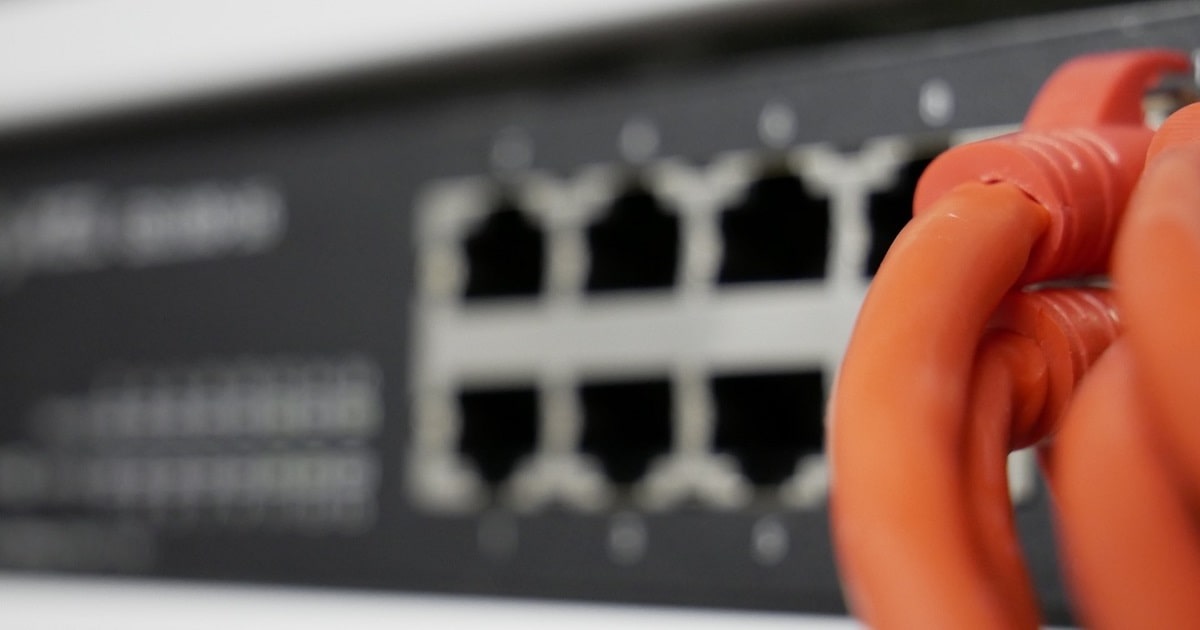
Hyper-Converged Infrastructure, Application Infrastructure
Article | May 17, 2023
The success of 5G technology is a function of both the infrastructure that supports it and the ecosystems that enable it. Today, the definitive focus in the 5G space is on enterprise use cases, ranging from dedicated private 5G networks to accessing edge compute infrastructure and public or private clouds from the public 5G network. As a result, vendor-neutral multitenant data center providers and their rich interconnection capabilities are pivotal in helping make 5G a reality. This is true both in terms of the physical infrastructure needed to support 5G and the ability to effectively connect enterprises to 5G.
Industry experts expect 5G to enable emerging applications such as virtual and augmented reality (AR/VR), industrial robotics/controls as part of the industrial internet of things (IIoT), interactive gaming, autonomous driving, and remote medical procedures. These applications need a modern, cloud-based infrastructure to meet requirements around latency, cost, availability and scalability. This infrastructure must be able to provide real-time, high-bandwidth, low-latency access to latency-dependent applications distributed at the edge of the network.
How Equinix thinks about network slicing
Network slicing refers to the ability to provision and connect functions within a common physical network to provide the resources necessary to deliver service functionality under specific performance constraints (such as latency, throughput, capacity and reliability) and functional constraints (such as security and applications/services). With network slicing, enterprises can use 5G networks and services for a wide variety of use cases on the same infrastructure.
Providing continuity of network slices with optimal UPF placement and intelligent interconnection
Mobile traffic originates in the mobile network, but it is not contained to the mobile network domain, because it runs between the user app on a device and the server workload on multi-access edge compute (MEC) or on the cloud. Therefore, to preserve intended characteristics, the slice must be extended all the way to where the traffic wants to go. This is why we like to say “the slicing must go on.”
The placement of network functions within the slice must be optimized relative to the intended traffic flow, so that performance can be ensured end-to-end. As a result, organizations must place or activate the user plane function (UPF) in optimal locations relative to the end-to-end user plane traffic flow.
We expect that hybrid and multicloud connectivity will remain a key requirement for enterprises using 5G access. In this case, hybrid refers to private edge computing resources (what we loosely call “MEC”) located in data centers—such as Equinix International Business Exchange™ (IBX®) data centers—and multicloud refers to accessing multiple cloud providers from 5G devices. To ensure both hybrid and multicloud connectivity, enterprises need to make the UPF part of the multidomain virtual Layer 2/Layer 3 interconnection fabric.
Because a slice must span multiple domains, automation of UPF activation, provisioning and virtual interconnection to edge compute and multicloud environments is critical.
Implementing network slicing for interconnection of core and edge technology
Equinix partnered with Kaloom to develop network slicing for interconnection of core and edge (NICE) technology within our 5G and Edge Technology Development Center (5G ETDC) in Dallas. NICE technology is built using cloud-native network fabric and high-performance 5G UPF from Kaloom. This is a production-ready software solution, running on white boxes built with P4 programmable application-specific integrated circuits (ASICs), allowing for deep network slicing and support for high-performance 5G UPF with extremely fast data transfer rates.
With NICE technology in the 5G ETDC, Equinix demonstrates:
5G UPF deployment/activation and traffic breakout at Equinix for multiple slices.
Software-defined interconnection between the 5G core and MEC resources from multiple providers.
Software-defined interconnection between the 5G core and multiple cloud service providers.
Orchestration of provisioning and automation of interconnection across the 5G core, MEC and cloud resources.
Architecture of NICE technology in the Equinix 5G ETDC
The image above shows (from left to right):
The mobile domain with radio access network (RAN), devices (simulated) and mobile backhaul connected to Equinix.
The Equinix domain with:
Equinix Metal® supporting edge computing servers and a fabric controller from Kaloom.
Network slicing fabric providing interconnection and Layer 2/Layer 3 cloud-native networking to dynamically activate UPF instances/interfaces connected with MEC environments and clouds, forming two slices (shown above in blue and red).
Equinix Fabric™ and multicloud connectivity.
This demonstrates the benefit of having the UPF as a feature of the interconnection fabric, effectively allowing UPF activation as part of the virtual fabric configuration. This ultimately enables high-performance UPF that’s suitable for use cases such as high-speed 5G fixed wireless access.
Combining UPF instances and MEC environments into an interconnection fabric makes it possible to create continuity for the slices and influence performance and functionality. Equinix Fabric adds multicloud connectivity to slices, enabling organizations to directly integrate network slicing with their mobile hybrid multicloud architectures.
Successful private 5G edge deployments deliver value in several ways. Primarily, they offer immediate access to locally provisioned elastic compute, storage and networking resources that deliver the best user and application experiences. In addition, they help businesses access a rich ecosystem of partners to unlock new technologies at the edge.
Secure, reliable connectivity and scalable resources are essential at the edge. A multivendor strategy with best-of-breed components complemented by telemetry, advanced analytics with management and orchestration—as demonstrated with NICE in Equinix data centers—is a most effective way to meet those requirements. With Equinix’s global footprint of secure, well-equipped facilities, customers can maximize benefits.”
- Suresh Krishnan, CTO, Kaloom
Equinix and its partners are building the future of 5G
NICE technology is just one example of how the Equinix 5G and Edge Technology Development Center enables the innovation and development of real-world capabilities that underpin the edge computing and interconnection infrastructure required to successfully implement 5G use cases. A key benefit of the 5G ETDC is the ability to combine cutting-edge innovations from our partners like Kaloom with proven solutions from Equinix that already serve a large ecosystem of customers actively utilizing hybrid multicloud architectures.
Read More

Application Infrastructure
Article | July 16, 2022
We’re all hoping that 2022 will finally end the unprecedented challenges brought by the global pandemic and things will return to a new normalcy. For IT infrastructure and operations organizations, the rising trends that we are seeing today will likely continue, but there are still a few areas that will need special attention from IT leaders over the next 12 to 18 months.
In no particular order, they include:
The New Edge
Edge computing is now at the forefront. Two primary factors that make it business-critical are the increased prevalence of remote and hybrid workplace models where employees will continue working remotely, either from home or a branch office, resulting in an increased adoption of cloud-based businesses and communications services.
With the rising focus on remote and hybrid workplace cultures, Zoom, Microsoft Teams, and Google Meet have continued to expand their solutions and add new features. As people start moving back to office, they are likely to want the same experience they had from home. In a typical enterprise setup, branch office traffic is usually backhauled all the way to the data center. This architecture severely impacts the user experience, so enterprises will have to review their network architectures and come up with a roadmap to accommodate local egress between branch offices and headquarters. That’s where the edge can help, bringing it closer to the workforce.
This also brings an opportunity to optimize costs by migrating from some of the expensive multi-protocol label switching (MPLS) or private circuits to relatively low-cost direct internet circuits, which is being addressed by the new secure access service edge (SASE) architecture that is being offered by many established vendors.
I anticipate some components of SASE, specifically those related to software-defined wide area network (SD-WAN), local egress, and virtual private network (VPN), will drive a lot of conversation this year.
Holistic Cloud Strategy
Cloud adoption will continue to grow, and along with software as a service (SaaS), there will be renewed interest in infrastructure as a service (IaaS), albeit for specific workloads. For a medium-to-large-sized enterprise with a substantial development environment, it will still be cost-prohibitive to move everything to the cloud, so any cloud strategy would need to be holistic and forward-looking to maximize its business value.
Another pandemic-induced shift is from using virtual machines (VMs) as a consumption unit of compute to containers as a consumption unit of software. For on-premises or private cloud deployment architectures that require sustainable management, organizations will have to orchestrate containers and deploy efficient container security and management tools.
Automation
Now that cloud adoption, migration, and edge computing architectures are becoming more prevalent, the legacy methods of infrastructure provisioning and management will not be scalable.
By increasing infrastructure automation, enterprises can optimize costs and be more flexible and efficient—but only if they are successful at developing new skills. To achieve the goal of “infrastructure as a code” will require a shift in the perspective on infrastructure automation to one that focuses on developing and sustaining skills and roles that improve efficiency and agility across on-premises, cloud, and edge infrastructures. Defining the roles of designers and architects to support automation is essential to ensure that automation works as expected, avoids significant errors, and complements other technologies.
AIOps (Artificial Intelligence for IT Operations)
Alongside complementing automation trends, the implementation of AIOps to effectively automate IT operations processes such as event correlation, anomaly detection, and causality determination will also be important. AIOps will eliminate the data silos in IT by bringing all types of data under one roof so it can be used to execute machine learning (ML)-based methods to develop insights for responsive enhancements and corrections.
AIOps can also help with probable cause analytics by focusing on the most likely source of a problem. The concept of site reliability engineering (SRE) is being increasingly adopted by SaaS providers and will gain importance in enterprise IT environments due to the trends listed above. AIOps is a key component that will enable site reliability engineers (SREs) to respond more quickly—and even proactively—by resolving issues without manual intervention.
These focus areas are by no means an exhaustive list. There are a variety of trends that will be more prevalent in specific industry areas, but a common theme in the post-pandemic era is going to be superior delivery of IT services. That’s also at the heart of the Autonomous Digital Enterprise, a forward-focused business framework designed to help companies make technology investments for the future.
Read More

Application Infrastructure, IT Systems Management
Article | May 8, 2023
Enterprises running hypervisors on hyper-converged infrastructure (HCI) systems typically have backup options available to them that are not available to those running on generic hardware. Such customers may also have additional backup challenges depending on the HCI vendor and hypervisor they have chosen. Let’s take a look.
Read More

Application Infrastructure
Article | November 23, 2021
In my last blog in this series, we looked at the present state of 5G. Although it’s still early and it’s impossible to fully comprehend the potential impact of 5G use cases that haven’t been built yet, opportunities to monetize 5G with little additional investment are out there for network service providers (NSPs) who know where to look.
Now, it’s time to look toward the future. Anyone who’s been paying attention knows that 5G technology will be revolutionary across many industry use cases, but I’m not sure everyone understands just how revolutionary, and how quickly it will go down. According to Gartner®, “While 10% of CSPs in 2020 provided commercializable 5G services, which could achieve multiregional availability, this number will increase to 60% by 2024”.[i]
With so many recognizing the value of 5G and acting to capitalize on it, NSPs that fail to prepare for future 5G opportunities today are doing themselves and their enterprise customers a serious disservice. Preparing for a 5G future may seem daunting but working with a trusted interconnection partner like Equinix can help make it easier.
5G is so challenging for NSPs and their customers because it is so revolutionary. Mobile radio networks were built with consumer use cases in mind, which means the traffic from those networks is generally dumped straight to the internet. 5G is the first generation of wireless technology capable of supporting enterprise-class business applications, which means it’s also forcing many NSPs to consider alternatives to the public internet to support those applications.
User plane function breakout helps put traffic near the app
In my last article, I mentioned that one of the key steps mobile network operators (MNOs) could take to enable 5G monetization in the short term would be to bypass the public internet by enabling user traffic functions in the data center. This is certainly a step in the right direction, but to prepare themselves for future 5G and multicloud opportunities, they must go further by enabling user plane function (UPF) breakout.
The 5G opportunities of tomorrow will rely on wireless traffic residing as close as possible to business applications, to reduce the distance data must travel and keep latency as low as possible. This is a similar challenge to the one NSPs faced in the past with their wireline networks. To address that challenge, they typically deployed virtual network functions (VNFs) on their own equipment. This helped them get the network capabilities they needed, when and where they needed them, but it also required them to buy colocation capacity and figure out how to interconnect their VNFs with the rest of their digital infrastructure.
Instead, Equinix customers have the option to do UPF breakout with Equinix Metal®, our automated bare-metal-as-a-service offering, or Network Edge virtual network services on Platform Equinix®. Both options provide a simple, cost-effective way to get the edge infrastructure needed to support 5G business applications. Since both offerings are integrated with Equinix Fabric™, they allow NSPs to create secure software-defined interconnection with a rich ecosystem of partners. This streamlines the process of setting up hybrid deployments.
Working with Equinix can help make UPF breakout less daunting. Instead of investing massive amounts of money to create 5G-ready infrastructure everywhere they need it, they can take advantage of more than 235 Equinix International Business Exchange™ (IBX®) data centers spread across 65 metros in 27 countries on five continents. This allows them to shift from a potentially debilitating up-front CAPEX investment to an OPEX investment spread over time, making the economics around 5G infrastructure much more manageable.
Support MEC with a wide array of partners
Multiaccess edge compute (MEC) will play a key role in enabling advanced 5G use cases, but first enterprises need a digital infrastructure capable of supporting it. This gets more complicated when they need to modernize their infrastructure while maintaining existing application-level partnerships. To put it simply, NSPs and their enterprise customers need an infrastructure provider that can not only partner with them, but also partner with their partners.
With Equinix Metal, organizations can deploy the physical infrastructure they need to support MEC at software speed, while also supporting capabilities from a diverse array of partners. For instance, Equinix Metal provides support for Google Anthos, Amazon Elastic Container Service (ECS) Anywhere and Amazon Elastic Kubernetes Service (EKS) Anywhere. These are just a few examples of how Equinix interconnection offerings make it easier to collaborate with leading cloud providers to deploy MEC-driven applications.
Provision reliable network slicing in a matter of minutes
Network slicing is another important 5G capability that can help NSPs differentiate their offerings and unlock new business opportunities. On the surface, it sounds simple: slicing up network traffic into different classes of service, so that the most important traffic is optimized for factors such as high throughput, low latency and security. However, NSPs won’t always know exactly what slices their customers will want to send or where they’ll want to send them, making network slice mapping a serious challenge.
Preparing for a 5G future may seem daunting but working with a trusted interconnection partner like Equinix can help make it easier.”
Equinix Fabric offers a quicker, more cost-effective way to map network slices, with no need for cross connects to be set on the fly. With software-defined interconnection, the counterparty that receives the network slice essentially becomes an automated function that NSPs can easily control. This means NSPs can provision network slicing in a matter of minutes, not days, even when they don’t know who the counterparty is going to be. Service automation enabled by Equinix Fabric can be a critical element of an NSP’s multidomain orchestration architecture.
5G use case: Reimagining the live event experience
As part of the MEF 3.0 Proof of Concept showcase, Equinix partnered with Spectrum Enterprise, Adva, and Juniper Networks to create a proof of concept (PoC) for a differentiated live event experience. The PoC showed how event promoters such as minor league sports teams could ingest multiple video feeds into an AI/ML-driven GPU farm that lives in an Equinix facility, and then process those feeds to present fans with custom content on demand.
With the help of network slicing and high-performance MEC, fans can build their own unique experience of the event, looking at different camera angles or following a particular player throughout the game. Event promoters can offer this personalized experience even without access to the on-site data centers that are more common in major league sports venues.
DISH taps Equinix for digital infrastructure services in support of 5G rollout
As DISH looks to build out the first nationwide 5G network in the U.S., they will partner with Equinix to gain access to critical digital infrastructure services in our IBX data centers. This is a great example of how Equinix is equipped to help its NSP partners access the modern digital infrastructure needed to capitalize on 5G—today and into the future.
DISH is taking the lead in delivering on the promise of 5G in the U.S., and our partnership with Equinix will enable us to secure critical interconnections for a nationwide 5G network. With proximity to large population centers, as well as network and cloud density, Equinix is the right partner to connect our cloud-native 5G network.”
- Jeff McSchooler, DISH executive vice president of wireless network operations
Read More